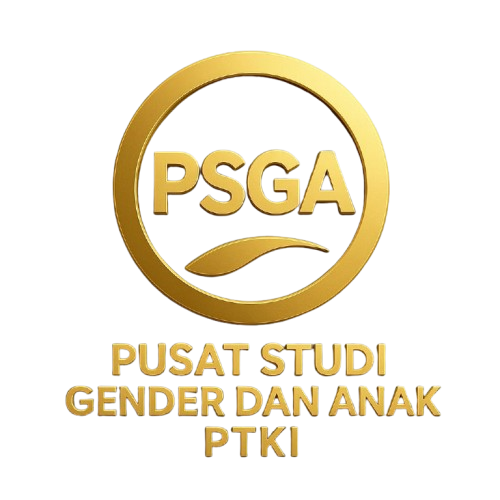INTERPRETASI MAKNA CANTIK DI KALANGAN MAHASISWA DALAM PERSFEKTIF FENOMENOLOGI SOSIAL: Studi Pada Mahasiswa Tadris IPS IAIN Metro
DOI:
https://doi.org/10.32332/jsga.v3i2.3640Keywords:
Meaning of Beauty, Student, Makna CantikAbstract
Abstract : Beauty is the most beautiful gift that God gives to every woman, how to care for it is also a nature that cannot be separated from the discussion of women, especially in the current millennial era. Beauty for the perception of many women can be relative and difficult to describe, but its meaning can be seen in different perspectives. This study aims to reveal what the meaning of beauty looks like for students of the IAIN Metro Social Studies Department, because based on the author's observations it is found that there are differences in perceptions in terms of interpreting beauty which tend to be seen from appearance so that students try to look beautiful by wearing make-up on campus so that beauty becomes a necessity of social recognition, appreciation and self-actualization. This study was analyzed using the theory of Phenomenology by Alfred Schutz. This study uses a qualitative research method with a phenomenological study approach. The results showed that there were various perceptions of the meaning of beauty for each student, especially Tadris IPS IAIN Metro students in interpreting beauty which tended to be objective in terms of: (1) ideal body shape (2) white and bright skin (3) attractive (outer beauty) rather than subjective meaning as seen from (1) Intellectual Intelligence (2) Emotional Intelligence (3) Spiritual Intelligence (Inner Beauty). The meaning of beauty for students is very diverse, every effort is made to meet certain beauty standards because then they will be more confident, get praise and attention and feel welcomed in a social environment.
References
Afrizal. (2016). Metode Penelitian Kualitatif, Sebuah Upaya Mendukung Penggunaan Penelitian Kualitatif Dalam Berbagai Disiplin Ilmu. In Jakarta: PT RajaGrafindo Persada.
Basrowi dan Suwandi. (2008). Memahami Penelitian Kualitatif. Jakarta: Rineka Cipta Bungin. עלון
הנוטע .
Cokelat, B. (2017). No Title. 4(1), 1–15.
Hamer, W., Pujakesuma, T. A. R., Lisdiana, A., Purwasih, A., Karsiwan, K., & Wardani, W. (2020). Menyiapkan {Sumber} {Daya} {Manusia} {Unggul} {Melalui} {Penanaman} {Nilai}-{Nilai} {Religius} {Pada} {Kegiatan} {Keagamaan} {Di} {Desa} {Pulau}{Pehawang} {Kecamatan} {Marga} {Punduh}. DEDIKASI: Jurnal Pengabdian Masyarakat, 2(1), 42–54. Retrieved from http://e-journal.metrouniv.ac.id/index.php/JPM/article/view/2177
Ikhsan, R., & Pranata, L. (2018). Motif Selfie di Kalangan Mahasiswa. Sosioglobal: Jurnal Pemikiran Dan Penelitian Sosiologi, 2(2), 1–9.
Hamer,Wellfarina (2013). minat siswa SMAN1 Talangpadang untuk melanjutkan studi ke perguruan tinggi. JEE (Jurnal Edukasi Ekobis).
Kurniawan, M. Y., Briawan, D., & Caraka, R. E. (2015). Persepsi tubuh dan gangguan makan pada remaja. Jurnal Gizi Klinik Indonesia, 11(3), 105. https://doi.org/10.22146/ijcn.19287
Nindito, S. (2013). Fenomenologi Alfred Schutz: Studi tentang Konstruksi Makna dan Realitas dalam Ilmu Sosial. Jurnal ILMU KOMUNIKASI. https://doi.org/10.24002/jik.v2i1.254
Pratiwi, O., & Luthfianiza, L. (2020). Dari Kuning Langsat Menjadi Putih: Representasi Identitas Kulit Perempuan Ideal Indonesia Dalam Iklan Citra. Jurnal Audiens, 1(2). https://doi.org/10.18196/ja.12016
Sari, I. P. (2019). Rekonstruksi dan Manipulasi Simbol Kecantikan. HAWA. https://doi.org/10.29300/hawapsga.v1i1.2221
Sari, W. P. (2015). Konflik Budaya Dalam Konstruksi Kecantikan Wanita Indonesia (Analisis Semiotika Dan Marxist Iklan Pond’s White Beauty Versi Gita Gutawa). Jurnal Komunikasi.
Trisnawati, T. Y. (2016). Fashion sebagai Bentuk Ekspresi Diri dalam Komunikasi. Jurnal The Messenger, 3(2), 36. https://doi.org/10.26623/themessenger.v3i2.268
Zahid, I. (2019). Definisi Kata Cantik: Analisis Kolokasi. Issues in Language Studies. https://doi.org/10.33736/ils.1615.2018
Downloads
Published
Versions
- 2021-11-12 (2)
- 2021-11-12 (1)
Issue
Section
License
Copyright (c) 2021 Siti Maria Ulva, Wellfarina Hamer, Citra Ayyuhda, Linda Nurlatifah

This work is licensed under a Creative Commons Attribution-ShareAlike 4.0 International License.






